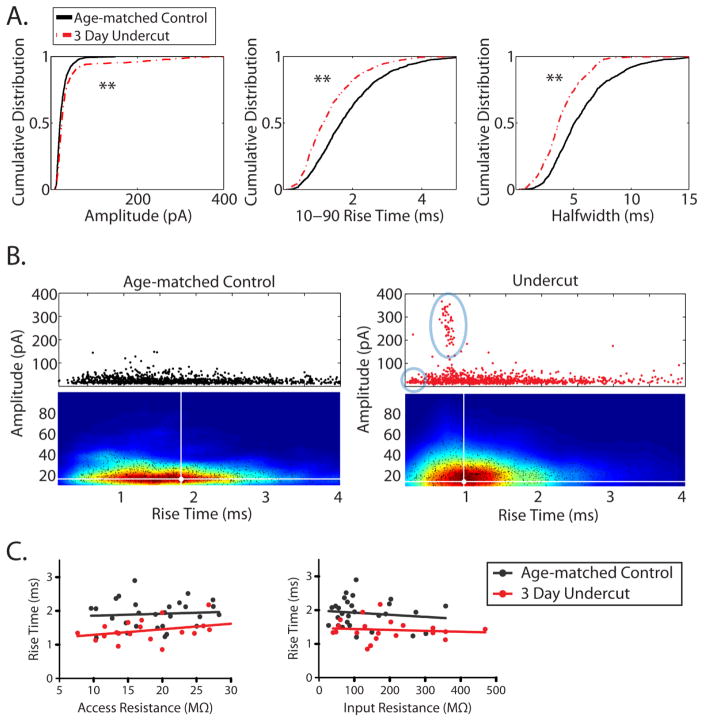Figure 5.
Spontaneous EPSCs are faster and larger after UC. A. Cumulative distributions of peak amplitudes (left), 10–90 rise times (middle), and half-widths (right) of spontaneous EPSCs recorded from layer V pyramidal neurons in cortical slices from control (n = 29, black solid line) and UC (n = 23, red dashed line). **P < 0.0001, KS-test. B. Scatter plot and cloud density analysis (i.e. density heat maps) of sEPSC amplitude vs. rise time from control (left) and UC (right) slices. Responses in blue circle and oval represent populations of large and/or fast EPSCs not present in recordings from control slices. Peak of the density data is shown by the white dot and crosshair. Density of the data is represented by color in the heat maps; blue to red represents low to high density. C. Comparison of average rise time to access resistance (left) or input resistance (right) recorded from each cell in cortical slices from control (black dots) or undercut (red dots) animals.

